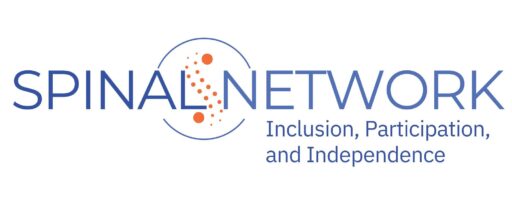Spasticity is the uncontrolled tightening or contracting of the muscles that is common in individuals with spinal cord injuries. About 65%–78% of the SCI population have some amount of spasticity, and it is more common in cervical (neck) than thoracic (chest) and lumbar (lower back) injuries. Symptoms and severity of spasticity vary from person to person and can include:
- Sudden, involuntary flexing (bending) or extending (straightening) of a limb, or jerking of muscle groups such as in the trunk (chest, back, and abdomen), bladder, or rectum.
- Hyperactive (overactive) reflexes, such as a muscle spasm when you are lightly touched.
- Stiff or tight muscles at rest, so that it is difficult to relax or stretch your muscles.
- Muscle tightness during activity, making it difficult for you to control your movement.
What causes spasticity?
The nerves of the spinal cord and brain form a complex communication circuit that controls our body movements. Information on sensations or processes such as touch, movement or muscle stretch is sent up the spinal cord to the brain. In response, the brain interprets the signal and sends the necessary commands back down the spinal cord to tell your body how to react. The reaction of the body, such as jerking away from a hot object, is a reflex and happens quickly and automatically. After a spinal cord injury, the normal flow of signals is disrupted, and the message does not reach the brain. Instead, the signals are sent back to the motor cells in the spinal cord and cause a reflex muscle spasm. This can result in a twitch, jerk or stiffening of the muscle. Just about any touch, movement or irritation can trigger and sustain spasms.
Common triggers are:
- Stretching your muscles.
- Moving your arm or leg.
- Any irritation to the skin, such as rubbing, chafing, a rash, in-grown toenails, or anything that would normally be very hot or cold or cause pain.
- Pressure sores.
- A urinary tract infection or full bladder.
Options for Managing Spasticity
A change in a person’s spasticity is something to pay attention to. For example, increased tone could be the result of a cyst or cavity forming in the spinal cord (post-traumatic syringomyelia). Untreated, cysts can lead to further loss of function. Problems outside your nervous system, such as bladder infections or skin sores, can increase spasticity.
Treatment for spasticity usually includes medications such as baclofen, diazepam or zanaflex. Some people with severe spasms utilize refillable baclofen pumps, which are small, surgically implanted reservoirs that apply the drug directly to the area of spinal cord dysfunction. This allows for a higher concentration of drug without the usual mind-dulling side effects of a high oral dosage.
Physical therapy, including muscle stretching, range of motion exercises, and other physical therapy regimens, can help prevent joint contractures (shrinkage or shortening of a muscle) and reduce the severity of symptoms.
Proper posture and positioning are important for people in wheelchairs and those at bed rest to reduce spasms. Orthotics, such as ankle-foot braces, are sometimes used to limit spasticity. Application of cold (cryotherapy) to an affected area can also calm muscle activity.
For many years doctors have used phenol nerve blocks to deaden nerves that cause spasticity. Lately, a better but more expensive nerve block, botulinum toxin (Botox), has become a popular treatment for spasms. An application of Botox lasts about three to six months; however, the body builds antibodies to the drug, reducing its effectiveness over time.
Sometimes, surgery is recommended for tendon release or to sever the nerve-muscle pathway in children with cerebral palsy. Selective dorsal rhizotomy may be considered if spasms interfere with sitting, bathing or general caretaking.
Spasticity comes with the territory for many people who are paralyzed. Treatment strategy should be based on one’s function:
- Is the spasticity keeping you from certain activities?
- Are there safety risks, such as losing control while driving your power chair or car?
- Are spasticity drugs worse than the symptoms, affecting concentration or energy?
- Options for Managing Spasticity section from the Christopher Reeve foundation,
